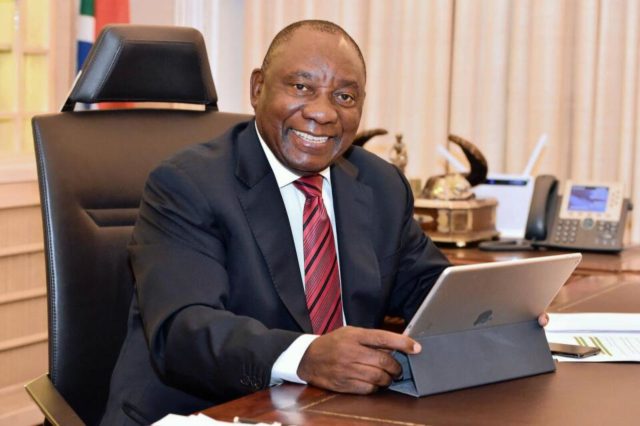The government is forced to prioritise spending programmes as the gross national debt is projected to be close to R4 trillion
President Cyril Ramaphosa on Thursday gave the strongest indication yet of the government’s commitment to cutting spending and reducing debt as part of reforms to boost economic growth.
Ramaphosa said the much-awaited Reconstruction and Economic Recovery Plan should balance the need to restore fiscal sustainability with economic growth.
The plan is centred on massive infrastructure spending, economic reforms, removing regulatory barriers, and securing energy supply, among others.
Ramaphosa said the upcoming Medium Term Budget Policy Statement (MTBPS) would provide a path of fiscal consolidation, debt reduction and reprioritisation that was supportive of growth and recovery.
The government is forced to prioritise spending programmes as the gross national debt is projected to be close to R4 trillion, or 81.8 percent of gross domestic product (GDP) by the end of this fiscal year.
Debt-service costs have spiralled inexorably upwards, threatening to crowd out public spending on policy priorities as South Africa now spends as much on debt-service costs as it does on health.
The country’s consolidated budget deficit was timed to be R761.7 billion, or 15.7 percent of GDP in 2020/21.
Ramaphosa said the deficit was unsustainable.
“We cannot sustain the current levels of debt, particularly as increasing borrowing costs are diverting resources that should be going to economic and social development,” he said. The broad macroeconomic framework would be outlined by Finance Minister Tito Mboweni in the MTBPS at the end of the month as he tries to rescue the economy from the expected 7.2 percent contraction.
Mboweni has previously warned that South Africa would be heading for a debt trap if the government does not rein in runaway expenditure. He now has an unenviable task which could see him cutting the public sector wage bill by R160bn over the next three years, a move that has put him in a collision course with the labour movements in the wake of the Covid-19 pandemic. In June, Mboweni said the government will narrow the budget deficit and stabilise debt at 87.4 percent of GDP in 2023/24, with a target of a primary surplus by 2023/24.
He said the government needed to find spending adjustments of about R230bn over the next 2 years and tax measures of R40bn over the next 4 years. Ramaphosa said in reducing expenditure, the government was ensuring that funds were reprioritised towards poverty alleviation, infrastructure investment, support for economic development and fighting crime and corruption.
He said the reduction would not only be limited to the public sector wage bill, but will be extended to struggling State-owned enterprises (SOEs) to shore up the fiscus.
“We are also reducing the reliance of SOEs on the fiscus by intensifying efforts to stabilise strategic companies, accelerating the rationalisation of SOEs and, where appropriate, identifying strategic partners,” Ramaphosa said.








